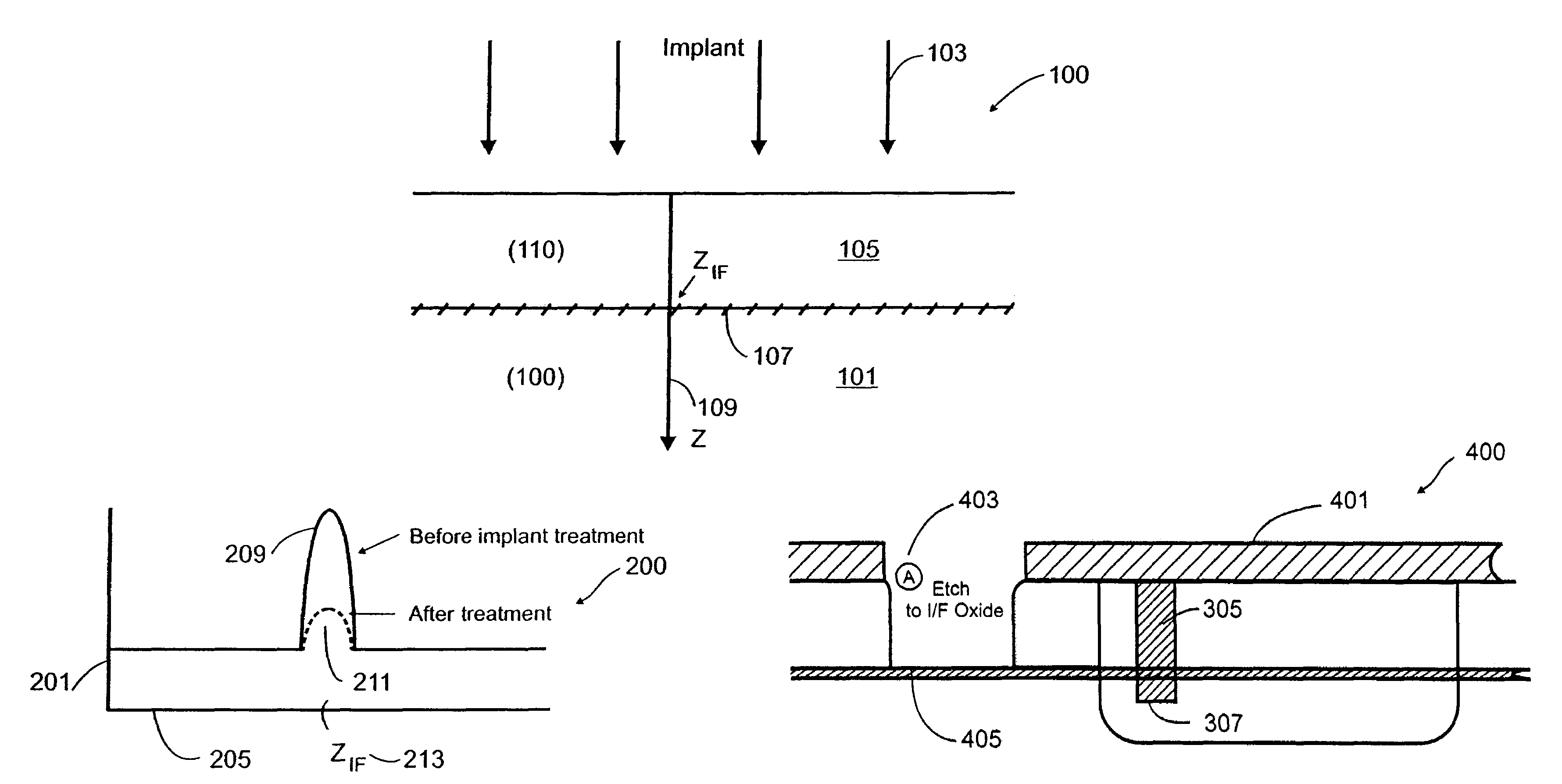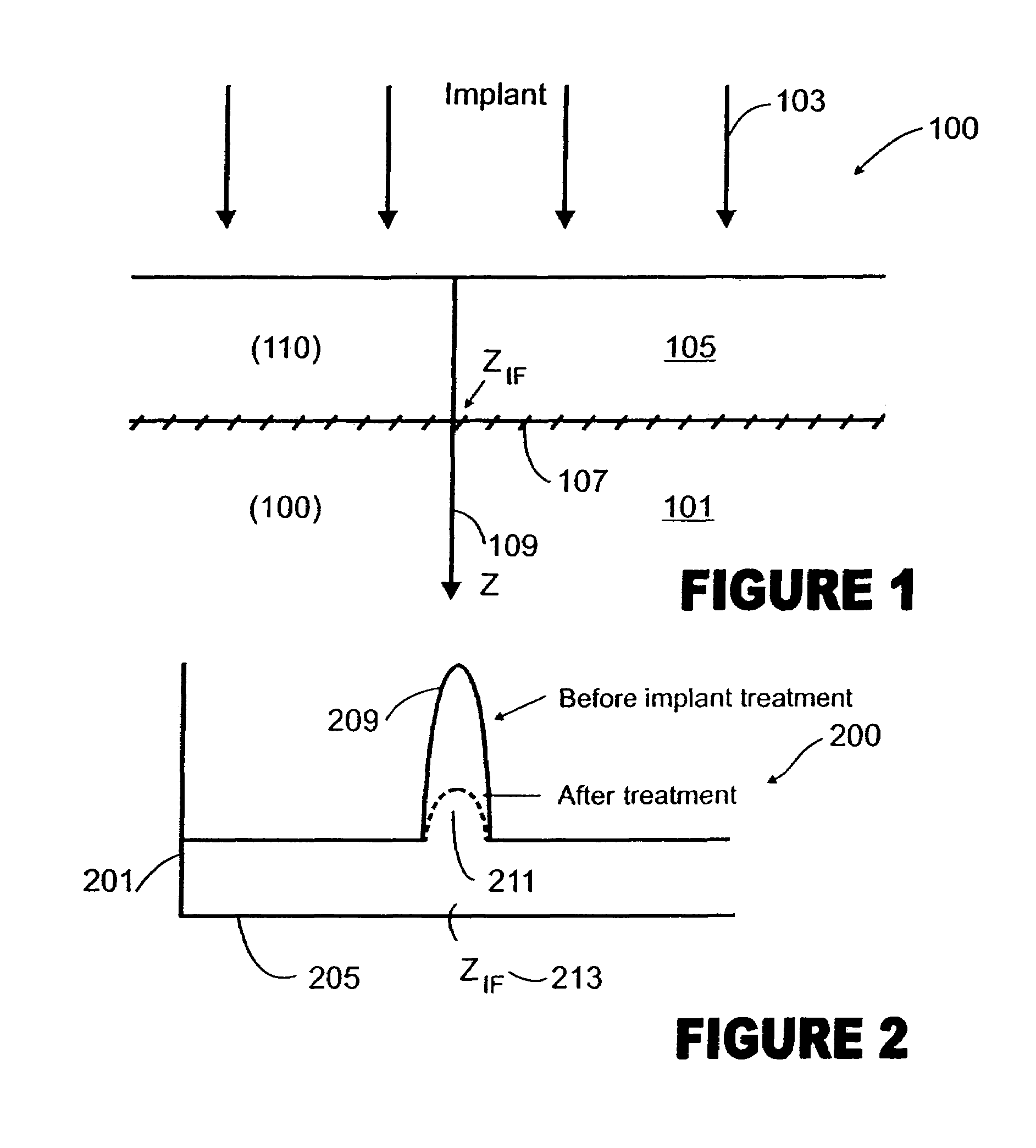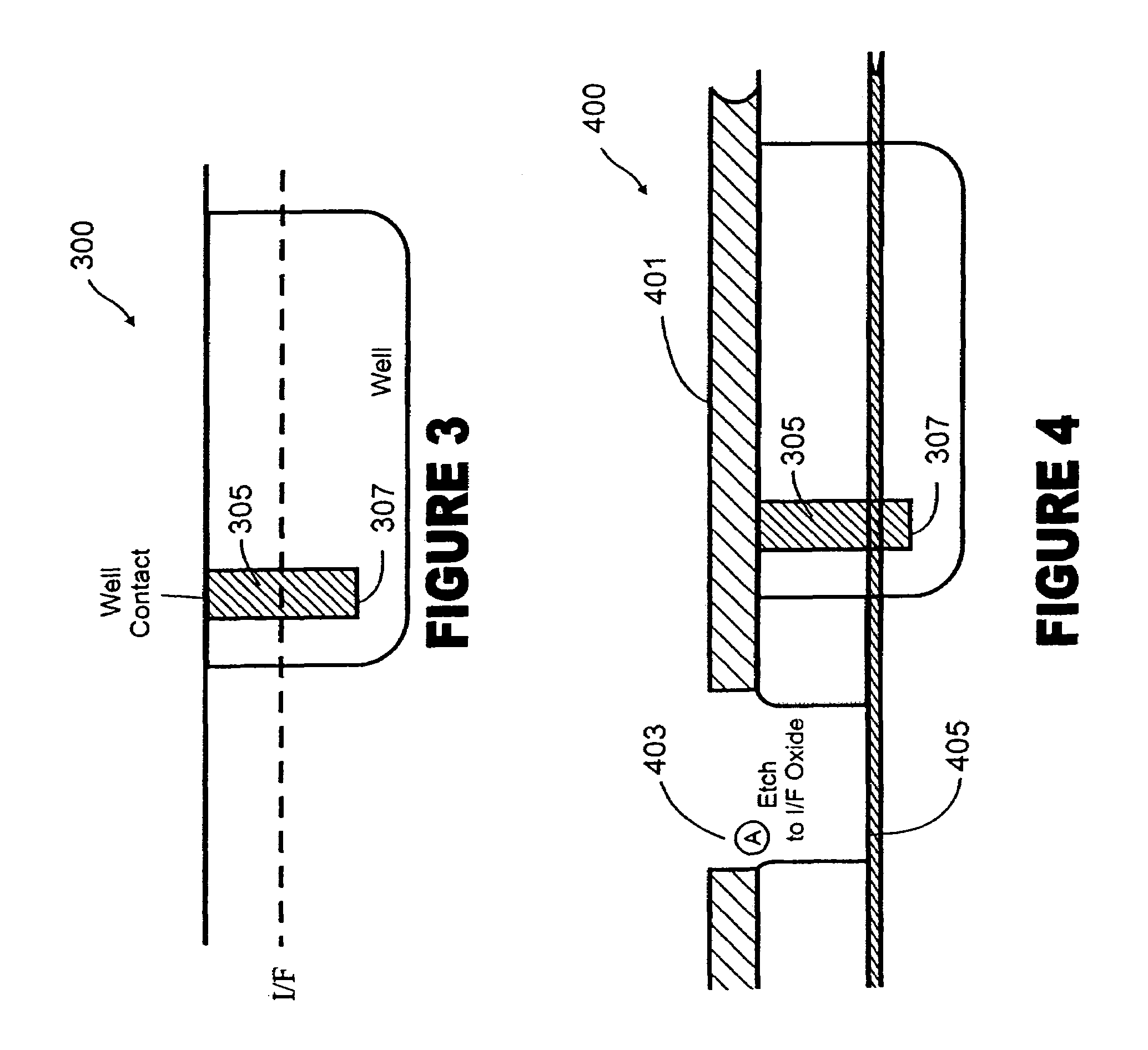Method and structure for implanting bonded substrates for electrical conductivity
a technology of electrical conductivity and substrate, which is applied in the manufacture of basic electric elements, semiconductor/solid-state devices, electrical apparatus, etc., can solve the problems of limiting the degree of integration of a given chip, conventional isolation techniques consume a considerable amount of valuable wafer surface area on the chip, and are not free from limitations, etc., to achieve improved process integration, high device yield, and convenient use
- Summary
- Abstract
- Description
- Claims
- Application Information
AI Technical Summary
Benefits of technology
Problems solved by technology
Method used
Image
Examples
Embodiment Construction
[0020]According to the present invention, techniques for the manufacture of substrates are provided. More particularly, the invention provides a technique including a method and device for forming a conductive region between bonded substrates using an implanting technique for the manufacture of semiconductor integrated circuits, for example. But it will be recognized that the invention has a wider range of applicability; it can also be applied to other substrates for multi-layered integrated circuit devices, three-dimensional packaging of integrated semiconductor devices, photonic devices, piezoelectronic devices, microelectromechanical systems (“MEMS”), sensors, actuators, solar cells, flat panel displays (e.g., LCD, AMLCD), biological and biomedical devices, and the like.
[0021]A method for manufacturing bonded substrates according to an embodiment of the present invention may be outlined as follows:
[0022]1. Provide a first substrate, which has a thickness of material to be removed...
PUM
| Property | Measurement | Unit |
|---|---|---|
| thickness | aaaaa | aaaaa |
| temperature | aaaaa | aaaaa |
| thickness | aaaaa | aaaaa |
Abstract
Description
Claims
Application Information
 Login to View More
Login to View More - R&D
- Intellectual Property
- Life Sciences
- Materials
- Tech Scout
- Unparalleled Data Quality
- Higher Quality Content
- 60% Fewer Hallucinations
Browse by: Latest US Patents, China's latest patents, Technical Efficacy Thesaurus, Application Domain, Technology Topic, Popular Technical Reports.
© 2025 PatSnap. All rights reserved.Legal|Privacy policy|Modern Slavery Act Transparency Statement|Sitemap|About US| Contact US: help@patsnap.com



